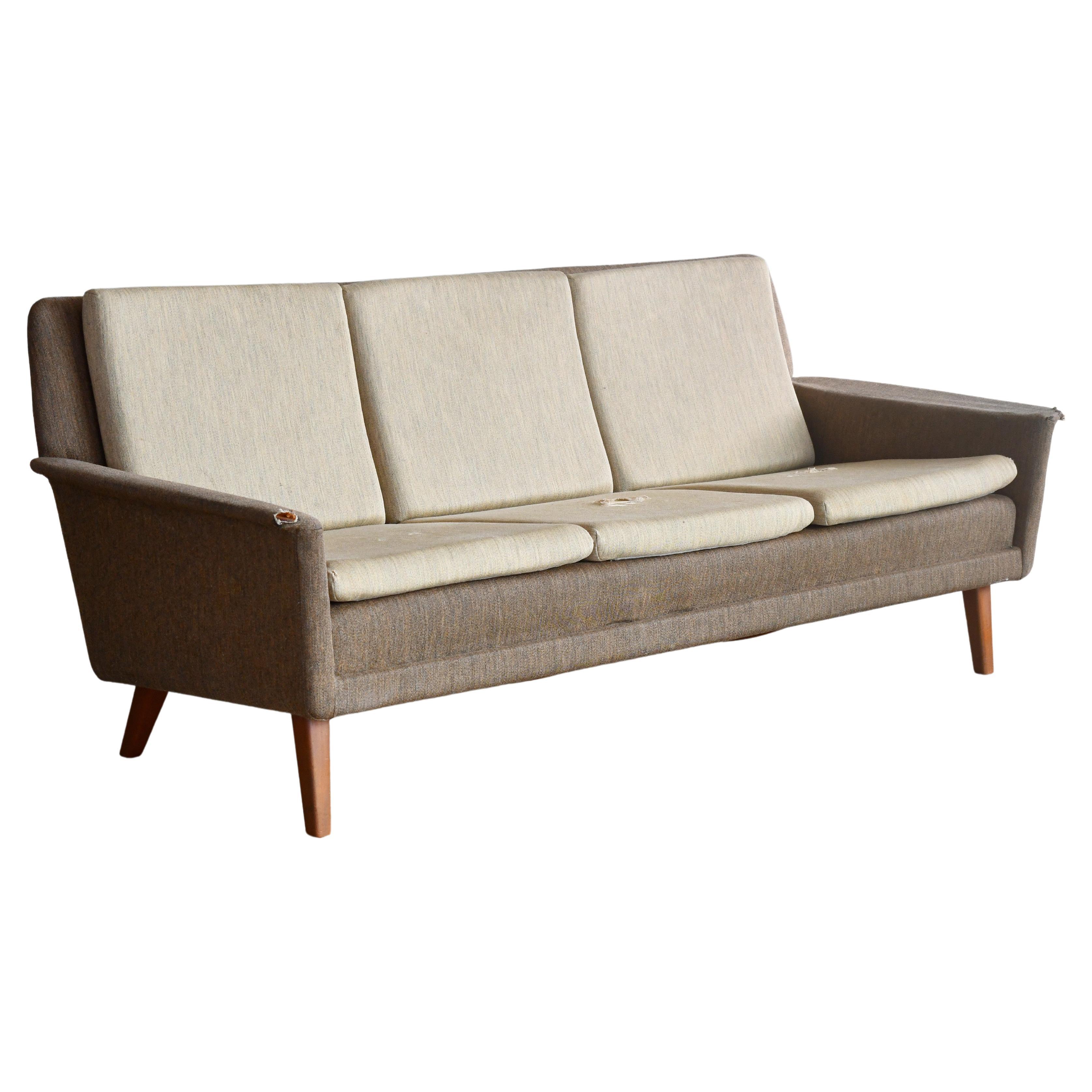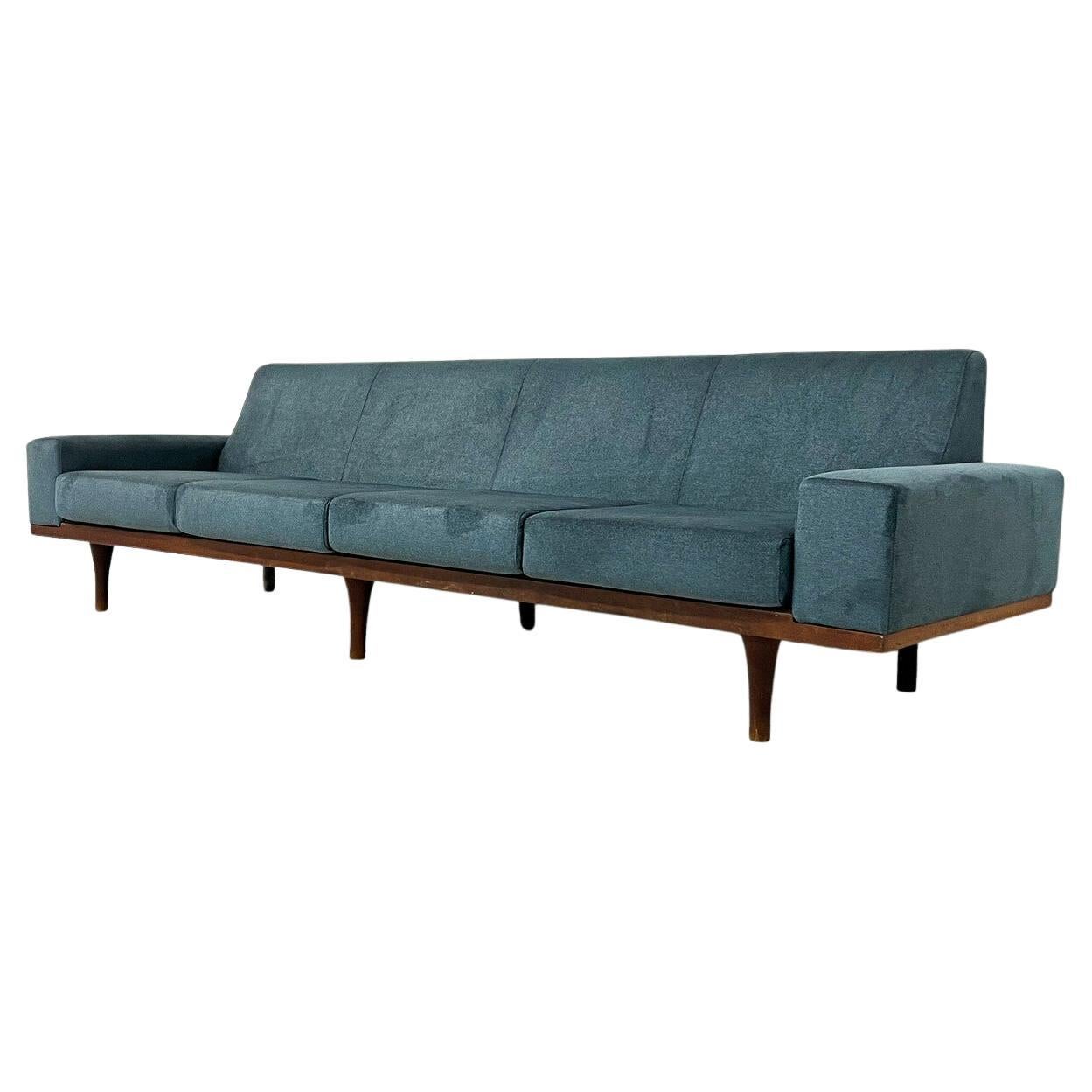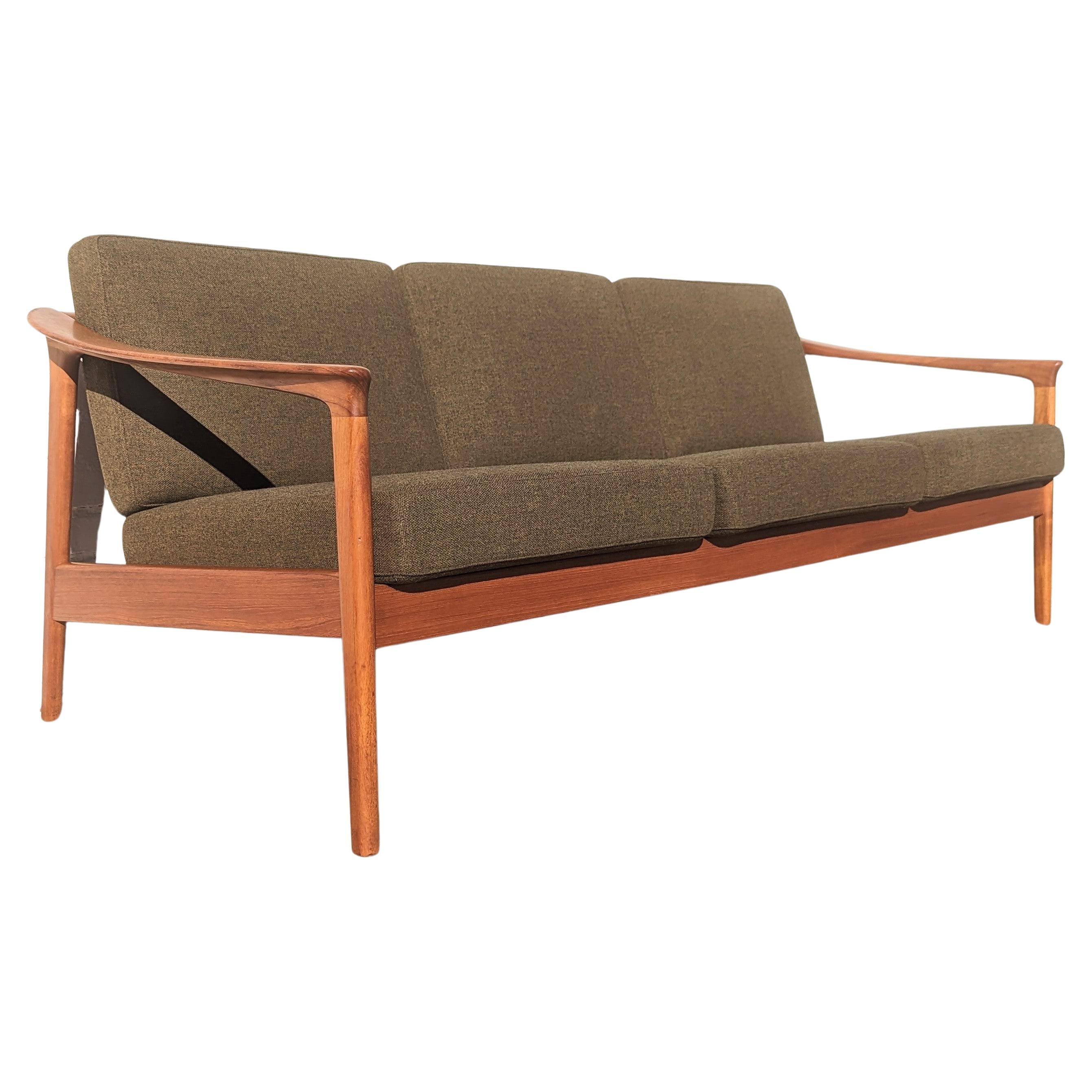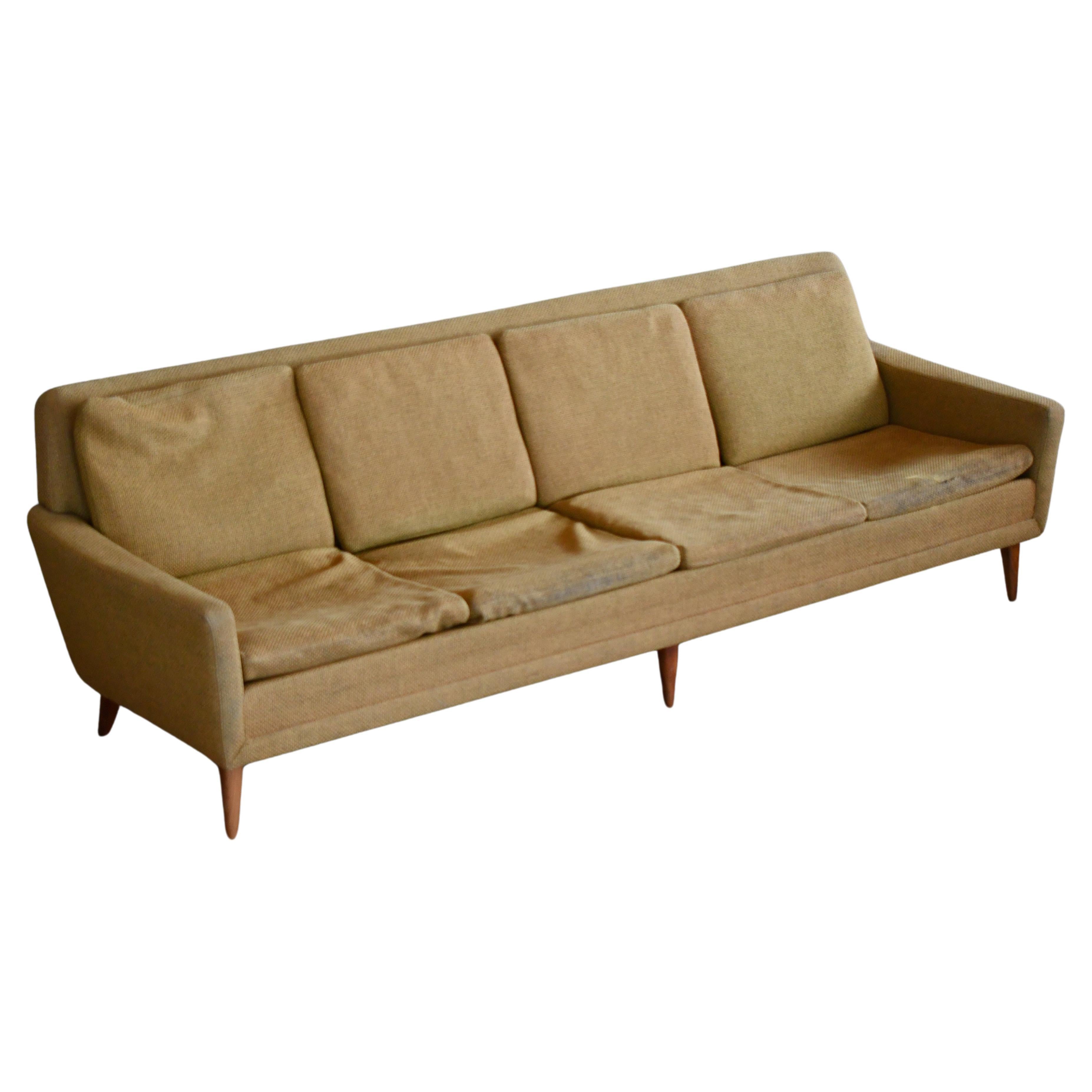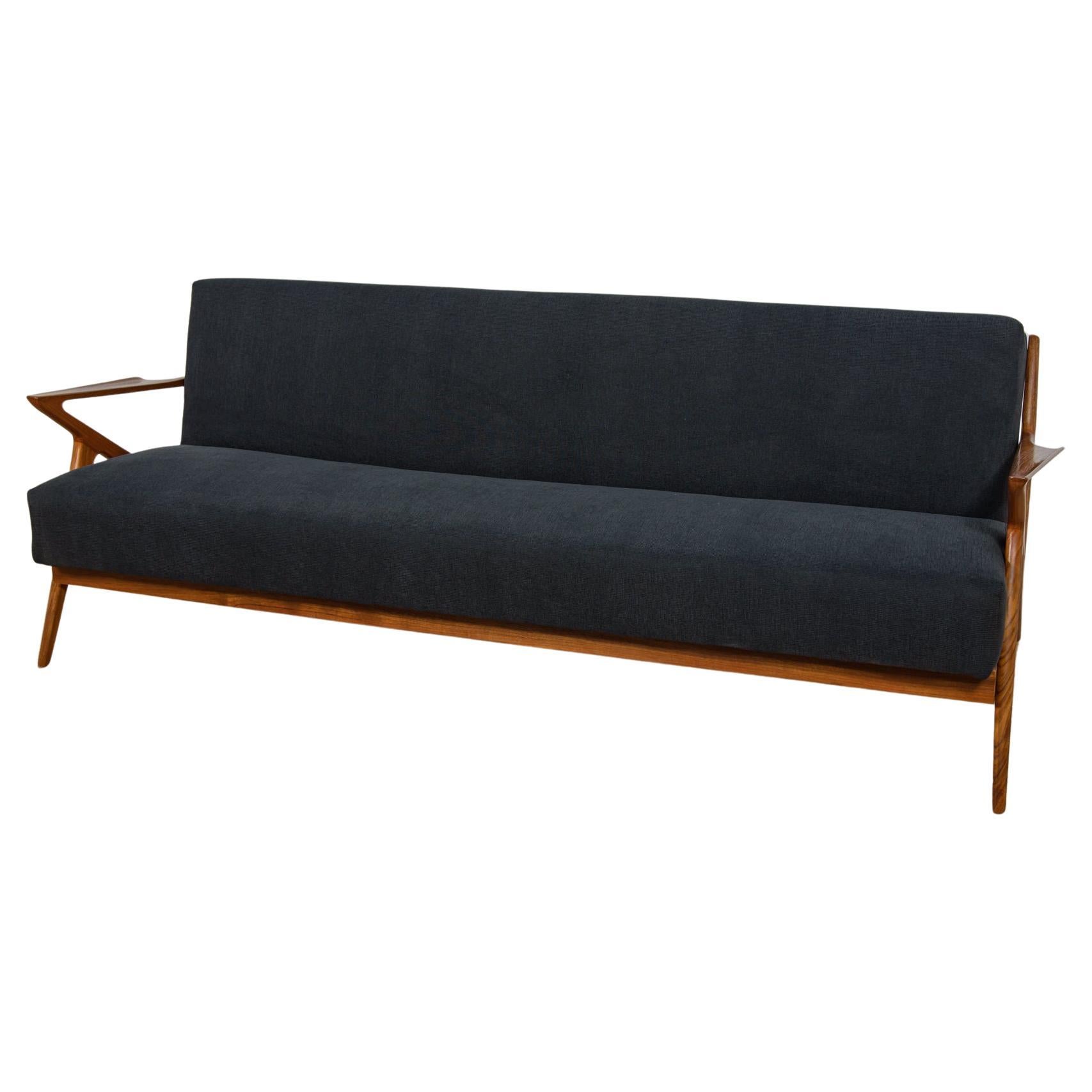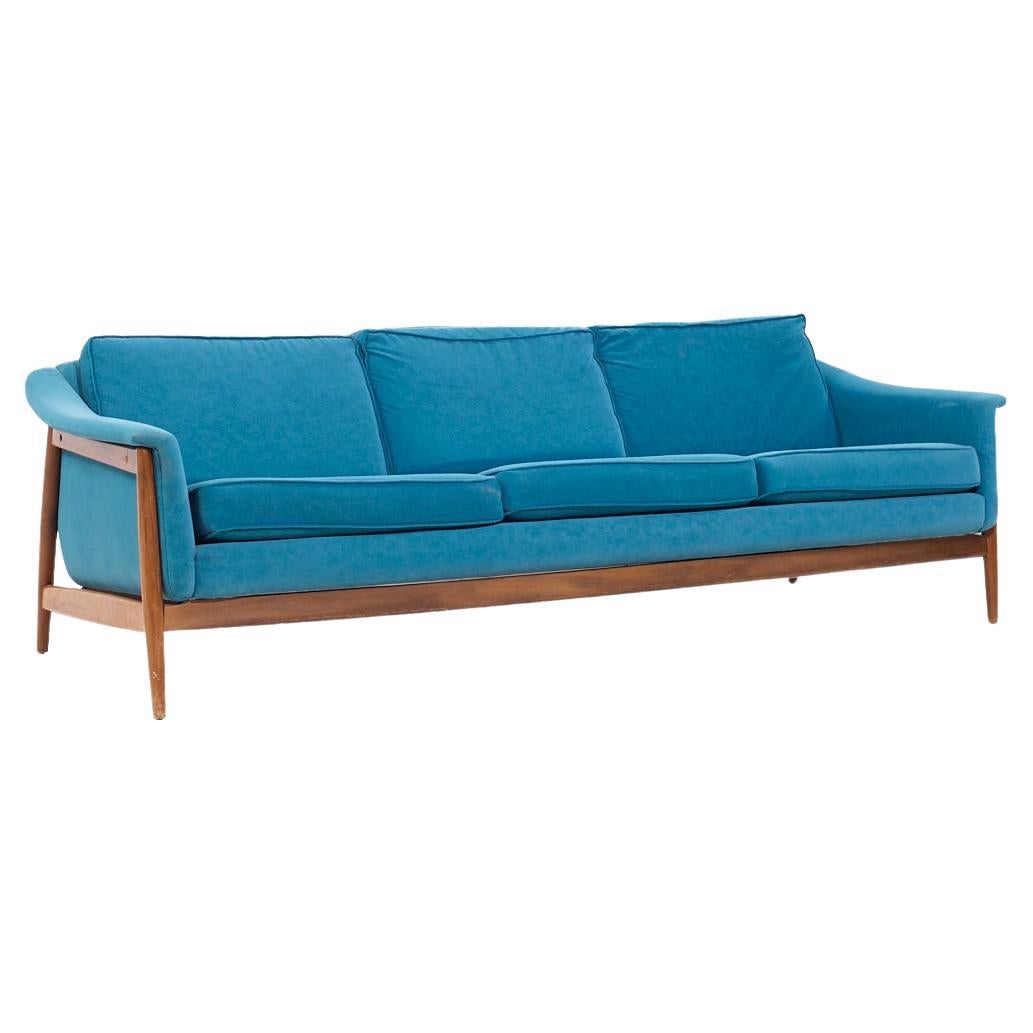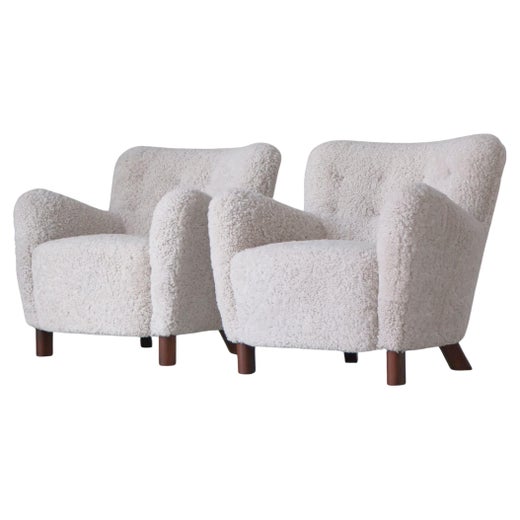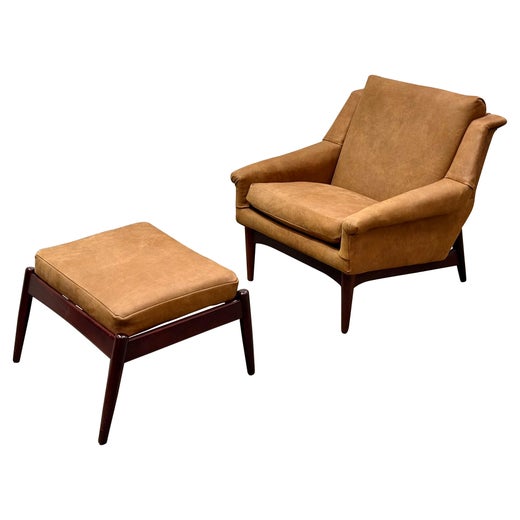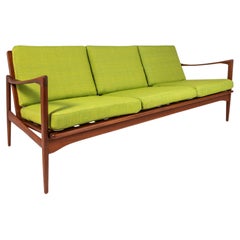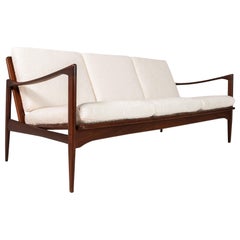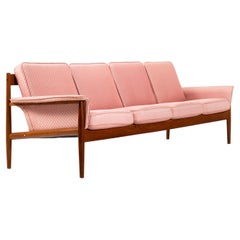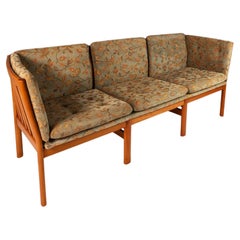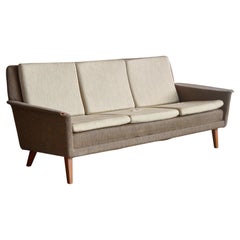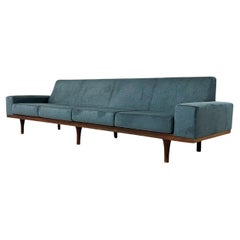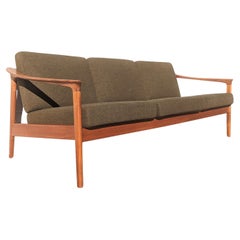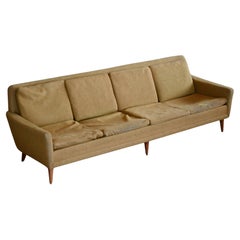Mid-Century Modern Four-Seat Sofa by Folke Ohlsson & Fritz Hansen, Denmark, 1960
About the Item
- Creator:Fritz Hansen (Designer),Folke Ohlsson (Designer)
- Dimensions:Height: 28.5 in (72.39 cm)Width: 95.5 in (242.57 cm)Depth: 32 in (81.28 cm)Seat Height: 16 in (40.64 cm)
- Style:Scandinavian Modern (Of the Period)
- Materials and Techniques:
- Place of Origin:
- Period:
- Date of Manufacture:1960s
- Condition:Wear consistent with age and use. This four-seat sofa is found in 100% original, vintage condition. We advise that this sofa be reupholstered. The labor cost for re-upholstery is included in the list price. All we will need is your preferred fabric (supplied by you in advance at your.
- Seller Location:Deland, FL
- Reference Number:Seller: AM00802RL1stDibs: LU7413231839112
Fritz Hansen
When the Copenhagen-based furniture maker Fritz Hansen opened for business more than 140 years ago, the company — which today styles itself The Republic of Fritz Hansen — adhered to the traditional, time-honored Danish values of craftsmanship in woodworking and joinery. Yet thanks to the postwar innovations of Arne Jacobsen and others, Fritz Hansen would become the country’s leader in Scandinavian modern design using new, forward-looking materials and methods.
Fritz Hansen started his company in 1872, specializing in the manufacture of small furniture parts. In 1915, the firm became the first in Denmark to make chairs using steam-bent wood (a technique most familiar from birch used in the ubiquitous café chairs by Austrian maker Thonet). At the time, Fritz Hansen was best known for seating that featured curved legs and curlicue splats and referenced 18th-century Chippendale designs.
In the next few decades, the company promoted simple, plain chairs with slatted backs and cane or rush seats designed by such proto-modernist masters as Kaare Klint and Søren Hansen. Still, the most aesthetically striking piece Fritz Hansen produced in the first half of the 20th century was arguably the China chair of 1944 by Hans Wegner — and that piece, with its yoke-shaped bentwood back- and armrest, was based on seating manufactured in China during the Ming dynasty. (Wegner was moved by portraits he’d seen of Danish merchants in the Chinese chairs.)
Everything changed in 1952 with Arne Jacobsen’s Ant chair. The collaboration between the architect and Fritz Hansen officially originated in 1934 — that year, Jacobsen created his inaugural piece for the manufacturer, the solid beechwood Bellevue chair for a restaurant commission. The Ant chair, however, was the breakthrough.
With assistance from his then-apprentice Verner Panton, Jacobsen designed the Ant chair for the cafeteria of a Danish healthcare company called Novo Nordisk. The chair was composed of a seat and backrest formed from a single piece of molded plywood attached, in its original iteration, to three tubular metal legs. Its silhouette suggests the shape of the insect’s body, and the lightweight, stackable chair and its biomorphic form became an international hit.
Jacobsen followed with more plywood successes, such as the Grand Prix chair of 1957. The following year he designed the SAS Royal Hotel in Copenhagen and its furnishings, including the Egg chair and the Swan chair. Those two upholstered pieces, with their lush, organic frames made of fiberglass-reinforced polyurethane, have become the two chairs most emblematic of mid-20th-century cool. Moreover, the Egg and Swan led Fritz Hansen to fully embrace new man-made materials, like foam, plastic and steel wire used to realize the avant-garde creations of later generations of designers with whom the firm collaborated, such as Piet Hein, Jørn Utzon (the architect of the Sydney Opera House) and Verner Panton. If the Fritz Hansen of 1872 would not now recognize his company, today’s connoisseurs certainly do.
Find a collection of vintage Fritz Hansen tables, lounge chairs, sofas and other furniture on 1stDibs.
Folke Ohlsson
Folke Ohlsson pioneered the “knock-down” revolution of furniture, making the innovative flat-pack means of manufacturing and shipping common practice. Credited with playing a significant part in bringing Scandinavian modern forms to the United States, he was an international designer who created attractive pieces that are highly coveted by today’s collectors.
In Sweden, Studio Ljungs Industrier AB is the large family-owned parent company of Duxiana (in America, DUX). While leading the design team for Studio Ljungs Industrier in his native Malmö, Ohlsson visited the West Coast of the United States in 1950 and opened DUX Inc., to expand the company’s global footprint. DUX put into practice an idea that Ohlsson patented for the so-called “knock-down,” or “KD,” chair, a term referencing easy, flat-pack assembly. It saved DUX space in warehouses and money on transportation and was a concept that would inspire hundreds of subsequent companies — most notably fellow Swedish brand IKEA.
Integrating American upholstery with Swedish knock-down hardware and wooden frames, Ohlsson and DUX revolutionized the furniture industry. The manufacturer consistently worked with brilliant mid-century modern designers — among them Bruno Mathsson, Edward Wormley and Alf Svensson — expanding the brand’s portfolio and establishing credibility as a design source. Today vintage DUX sofas and dining chairs are valuable collector’s items, and the space-saving attributes and efficiency associated with the company’s modular designs continue to influence manufacturers all over the world.
Partly because of the affordability of DUX’s furniture — as well as an understandable affinity for the simplicity, warmth and coziness of Scandinavian modern design — postwar America embraced Ohlsson’s vision. One of Ohlsson’s best-known designs is the Profil lounge chair, built on a teak frame that can rock or recline with the push of a lever, while the wool bouclé upholstery is sumptuous and stylish. Another iconic collection is the clean, minimal Pasadena set of sofas, footstools and armchairs, fashioned from solid walnut with brass sabots.
The Milano Triennale and the “Good Design” exhibition series at New York City’s Museum of Modern Art distinguished Ohlsson with more than 30 awards. In 1964, he was honored with Sweden’s Royal Order of Vasa decoration by King Gustav VI Adolf because of his role in exporting modern Scandinavian aesthetics to America. Ohlsson’s designs were also produced by Bodafors and Fritz Hansen.
On 1stDibs, find a selection of Folke Ohlsson seating, tables, case pieces and storage cabinets.
- ShippingRetrieving quote...Shipping from: Deland, FL
- Return Policy
More From This Seller
View AllVintage 1960s European Scandinavian Modern Sofas
Fabric, Wood, Teak
Vintage 1960s Danish Mid-Century Modern Sofas
Teak
Vintage 1960s Danish Scandinavian Modern Sofas
Teak
Vintage 1980s Danish Mid-Century Modern Sofas
Beech
Vintage 1960s Danish Scandinavian Modern Loveseats
Teak
Vintage 1960s American Mid-Century Modern Sofas
Oak
You May Also Like
Vintage 1950s Danish Mid-Century Modern Sofas
Wool, Teak
Vintage 1950s Danish Sofas
Fabric, Wood
Vintage 1960s Scandinavian Scandinavian Modern Sofas
Upholstery, Teak
Vintage 1960s Swedish Scandinavian Modern Sofas
Wool, Teak
Vintage 1960s Danish Mid-Century Modern Sofas
Fabric, Teak
Vintage 1970s Danish Mid-Century Modern Sofas
Upholstery, Teak
